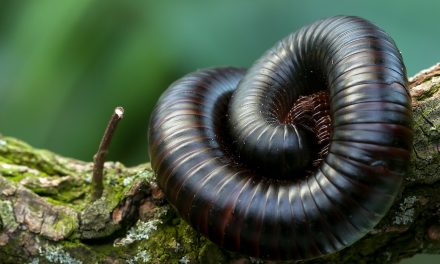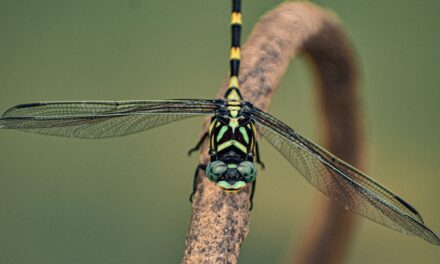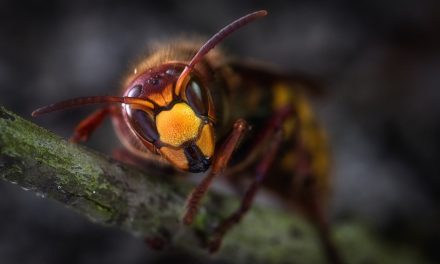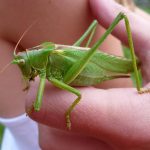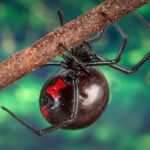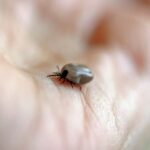Nocturnal insects are fascinating creatures that are active during the night and rest during the day. They have unique adaptations that help them survive in low-light conditions, making them an interesting subject to observe. The best part is that many of these nocturnal insects can be found right in your own backyard! Whether you live in the city or the countryside, there are many species of insects that come out at night to explore and search for food. In this article, we’ll explore some common types of nocturnal insects that you can find in your own backyard and how to observe them safely.
Moths and butterflies

Moths and butterflies are both insects belonging to the order Lepidoptera, which means “scale-winged.” While they share many similarities, there are some key differences between the two. Butterflies are usually more brightly coloured and have slender bodies, while moths tend to be drab in colour and have stout bodies. Butterflies also rest with their wings held vertically, while moths rest with their wings flat.
Some common species of moths that are active at night include Luna moths, which have beautiful green wings and can often be seen near light sources, and owlet moths, which have distinctive markings on their wings.
If you want to attract moths and butterflies to your backyard, there are a few things you can do. First, plant specific flowers that are known to attract them, such as butterfly bush, milkweed, and zinnias. You can also use a light trap, which is a simple device that attracts moths and other nocturnal insects with light and then traps them for observation. Just be sure to release any captured insects back into their natural habitat.
Beetles

Beetles are a diverse group of insects that come in a variety of shapes and sizes. They are easily recognised by their hard, shell-like wings that cover their delicate, membranous wings. Beetles are important nocturnal insects because they play a crucial role in our ecosystem as decomposers, pollinators, and predators.
Some common nocturnal beetle species include ground beetles and fireflies. Ground beetles are usually found on the ground, hiding under rocks or in the soil. They are known for their predatory behaviour, hunting other insects for food. Fireflies, on the other hand, are known for their bioluminescence—the ability to produce light—which they use to communicate and attract mates.
If you’re interested in finding beetles in your backyard, one of the best ways is to search under logs and rocks. Beetles are often found in these dark and moist areas, where they feed on decomposing organic matter or prey on other insects. You can also set up a light trap to attract nocturnal insects like beetles. Place a light source, such as a black light or LED light, near a white sheet and wait for the insects to come to you. Just make sure to release them back into their natural habitat after observing them.
Crickets and grasshoppers

Crickets and grasshoppers are fascinating insects that are often heard but not seen. They are part of the order Orthoptera and have long, powerful hind legs for jumping. While they may look similar, there are some key differences between crickets and grasshoppers.
Crickets have long, thin antennae and produce their familiar chirping sound by rubbing their wings together. They are usually nocturnal and can be found in a variety of habitats, including fields and meadows. Some common species of nocturnal crickets include:
- Field crickets
- Mole crickets
- Camel crickets
Grasshoppers, on the other hand, have short, thick antennae and produce their sound by rubbing their hind legs against their wings. They are typically diurnal (active during the day) and can be found in grassy areas, such as meadows and pastures. Some common species of nocturnal grasshoppers include:
- Katydids
- Crinkle grasshoppers
To find crickets and grasshoppers in your backyard, listen for their distinctive calls. Crickets make a chirping sound, while grasshoppers produce a buzzing or rasping sound. You can also look for them under rocks, logs, and other debris. Grasshoppers may also be found on plants and leaves, where they feed on vegetation.
It’s important to note that crickets and grasshoppers play an important role in many ecosystems as food for other animals. When observing these insects, it’s important to avoid harming them or their habitats.
Other nocturnal insects
In addition to moths, butterflies, and beetles, there are many other types of nocturnal insects that can be found in your backyard. Some examples include cockroaches and earwigs. While these insects may not be as visually appealing as moths and butterflies, they still play an important role in the ecosystem.
If you come across these insects in your backyard, it is important to handle them safely and with care. Many nocturnal insects can be sensitive to light, so using a red-light torch can help reduce the risk of startling them. Additionally, it is important to wash your hands thoroughly after handling any insect to avoid transferring any harmful bacteria or toxins.
Final thoughts
Nocturnal insects are fascinating creatures that can be found right in your own backyard. By learning about their characteristics, identifying common species, and providing suitable habitats, you can attract these insects and observe them up close. Remember to respect these creatures and their habitats, and handle them with care when you do come across them. Happy exploring!


